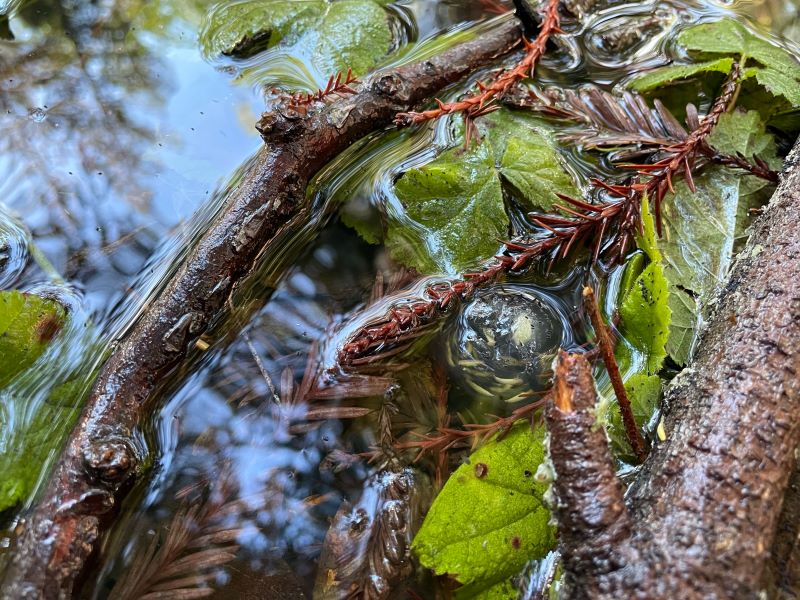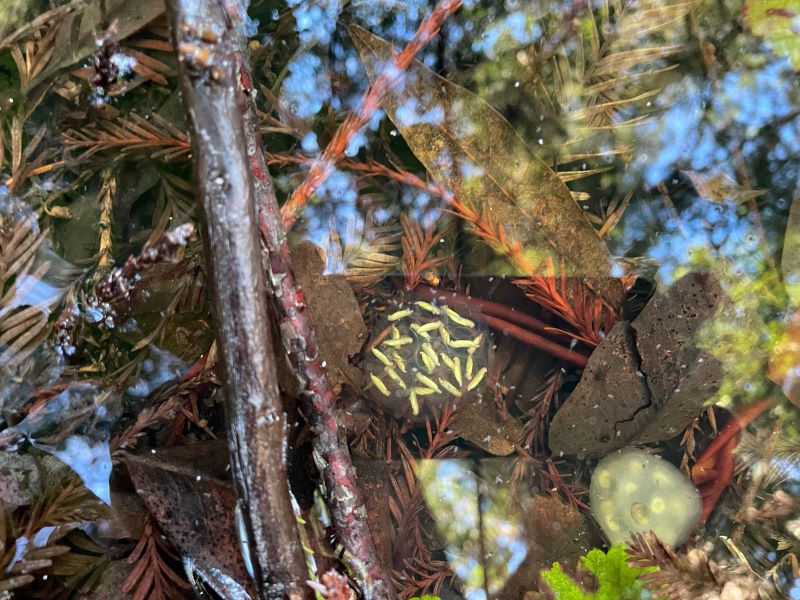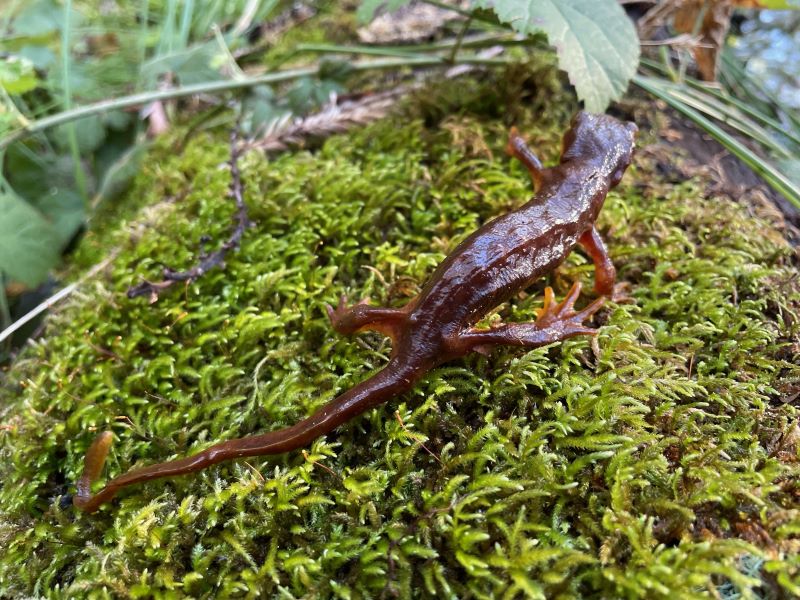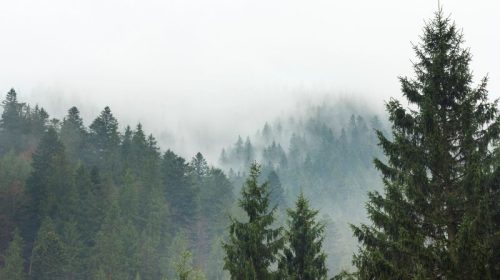Newt Season
By Ryan Okrant
Newts, newts, they’re adorably cute, be aware of their migration route! The San Lorenzo Valley is home to multiple populations of newts. As residents on their turf, we need to lend them a helping hand. The California newt is not on any endangered species lists as of yet, though there are theories that are beginning to predict dwindling populations caused by loss of habitat, urban development, and climate change.
Local Boulder Creek resident and M.S. Wildlife Biologist, Chrissie Klinkowski, is leading a charge to put the spotlight on these unique creatures which reside in our area. Klinkowski and her husband, Davey Tomasulo, moved into a neighborhood that just happens to be a migration corridor for California newts and Sierran tree frogs. They were out walking their pup one evening when they came across an area that had multiple wounded and deceased newts and tree frogs across a small section of their private road. Klinkoswki’s love for animals, along with her education in wildlife biology, inspired her to take action to prevent further impacts on these amphibians. She is currently collecting data in an effort to gain funding for an amphibian under-crossing.
Upon learning of Klinkowski’s mission, I began discussing newts with other locals to uncover more about them and how common they are throughout the valley. Longtime Boulder Creek resident, Angelica Walker, informed me of a pond high up on one of our Boulder Creek mountaintops. She shared details of the pond with me shortly after parts of the San Lorenzo Valley had experienced the most snowfall I’ve witnessed here in the past 40+ years. A few days later we hiked the mountain to see what impact the snow had made on the newt populations in the pond. Upon arriving, we were pleased to see a plethora of newts and newt egg sacs all around the pond. Large newts, small newts, and unhatched newts were floating and swimming all throughout the water.


Newts are a good indicator of the health of our ecosystem and also help to maintain insect populations. According to amphibianplanet.com, “Newts are semi-aquatic animals, which means they live both on land and in the water. They have different ways of breathing in each of these unique environments.” In order to breathe underwater, newts use cutaneous respiration — meaning they breathe through their skin using thin membranes and a large network of blood vessels. This system takes oxygen that is dissolved in water and transmits it into the bloodstream. They still have to rise to the surface occasionally to take a breath, as this system isn’t usually sufficient enough.
Newts breeding and egg-laying timeframe runs from November to April. Klinkowski explains, “In the water, males will perform a little dance and then use the nuptial pads on the tips of their toes to clasp the back of the female. Females lay many small round clusters of eggs about 1.4” in diameter.” She goes on to say, “Larvae generally metamorphose in late summer at 4-8 months of age, but this depends on habitat quality.”

While the pond at the mountaintop provides a safe haven for newts and other amphibians, other populations aren’t so lucky as they are being impacted by human development. Roads, buildings, fences, and retaining walls create many challenges and hazards for our little newt friends. Newt patrols have been organized by proactive citizens for decades; our local chapter needs your help identifying more impacted breeding corridors as well as additional boots-on-the-ground volunteers. Please email me at the address below, and I will help get you involved with Klinkowski’s newt patrol.
Ryan Okrant was born and raised in the Santa Cruz Mountains. He is passionate about animals of all kinds and is always willing to help those in need. Ryan is co-founder and Executive Director of ASSERT Drone Animal Rescue www.assert.earth. Email: ryan@assert.earth.
(Photos by Chrissie Klinkowski)
Featured photo: The California Newt at home in the Santa Cruz Mountain’s mossy, forested environs
The San Lorenzo Valley Post is your essential guide to life in the Santa Cruz Mountains. We're dedicated to delivering the latest news, events, and stories that matter to our community. From local government to schools, from environmental issues to the arts, we're committed to providing comprehensive and unbiased coverage. We believe in the power of community journalism and strive to be a platform for diverse voices.





